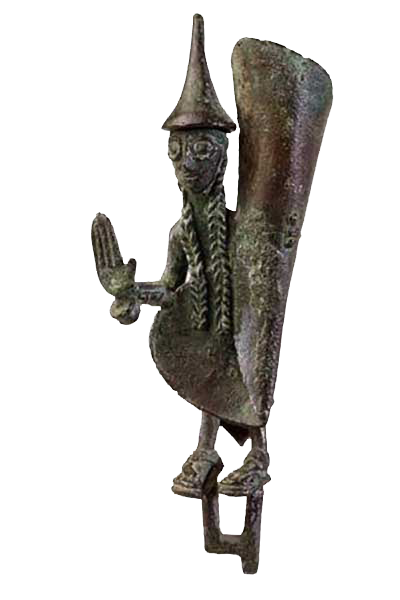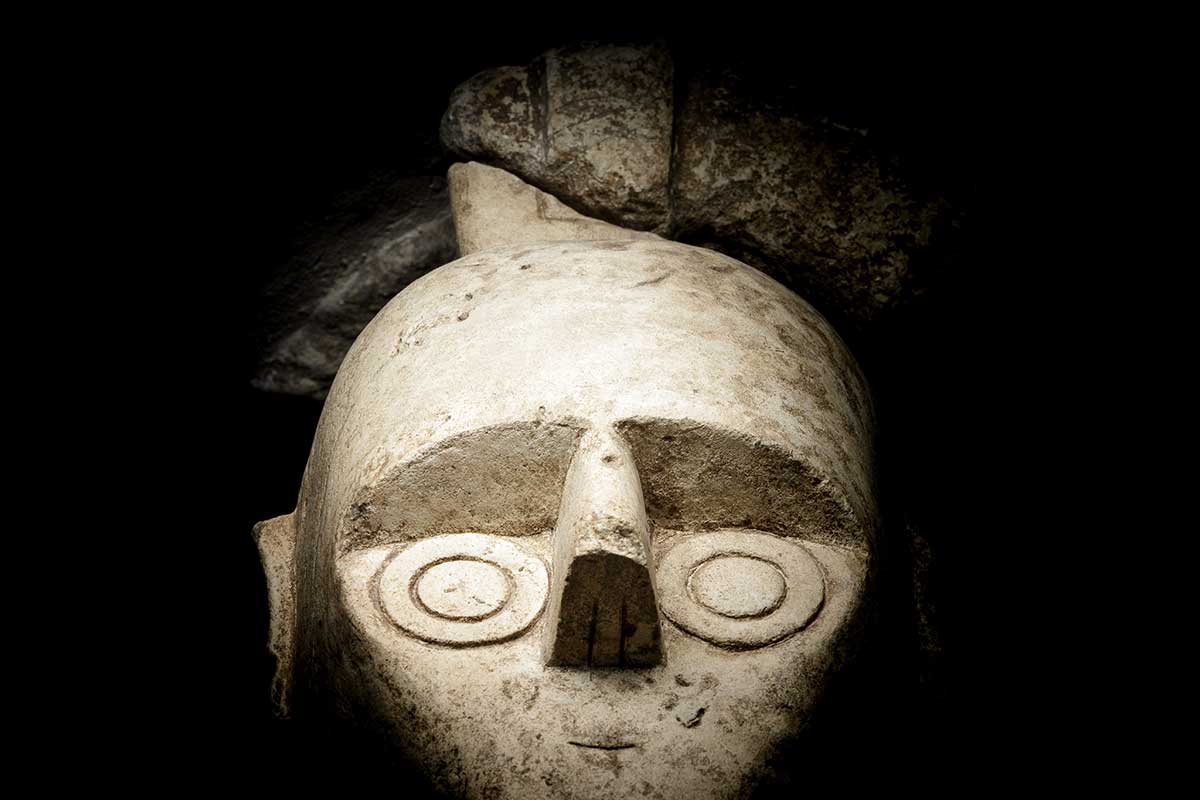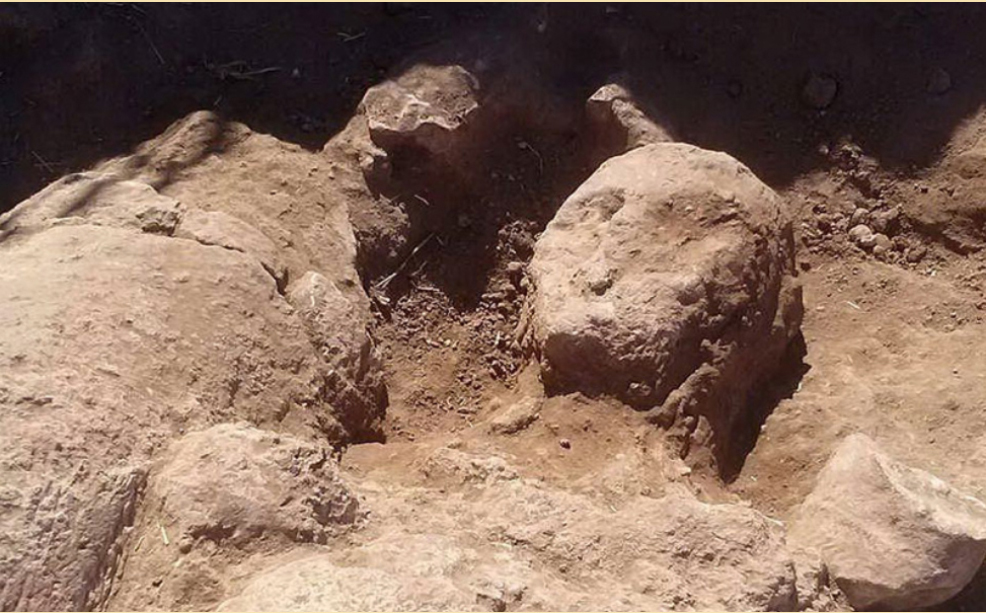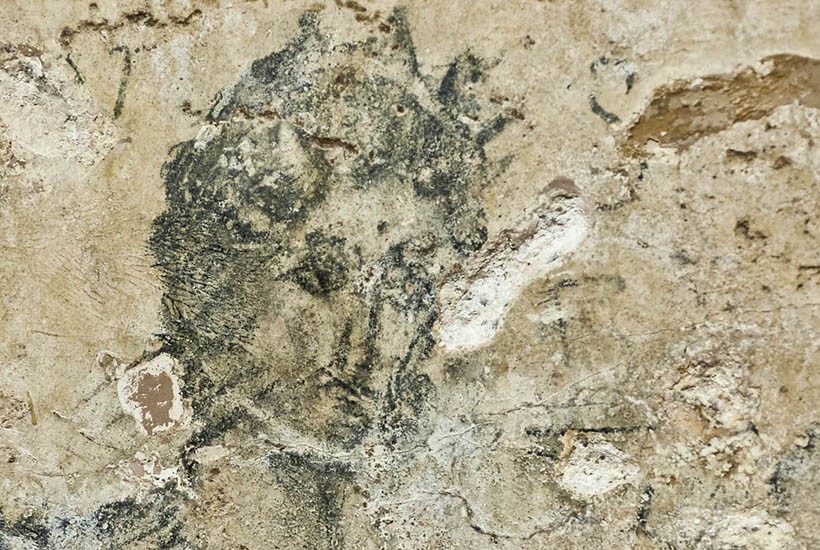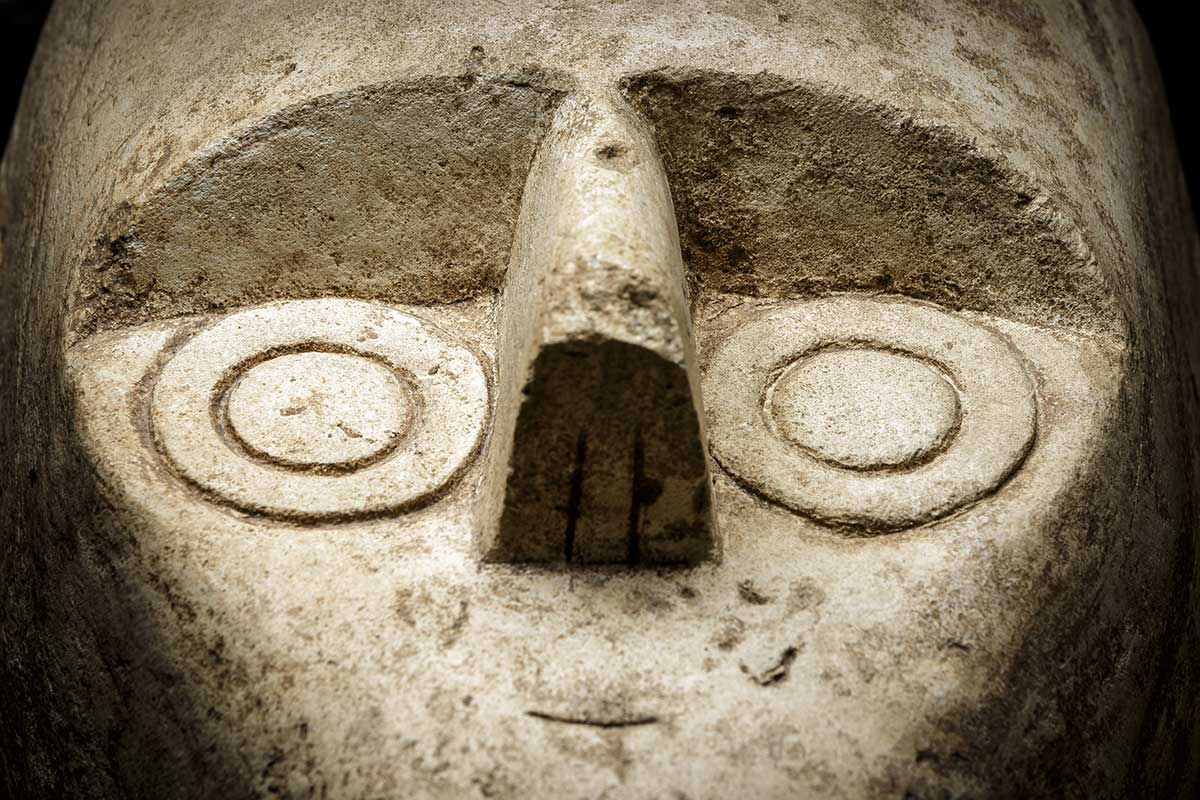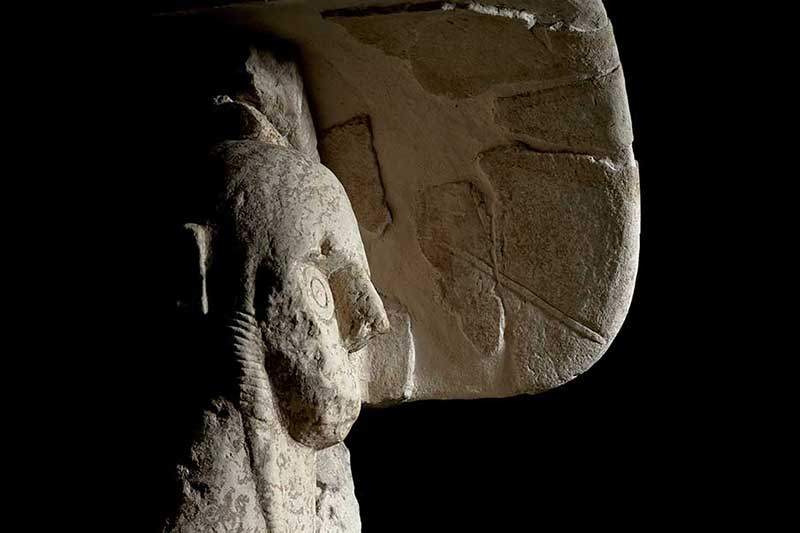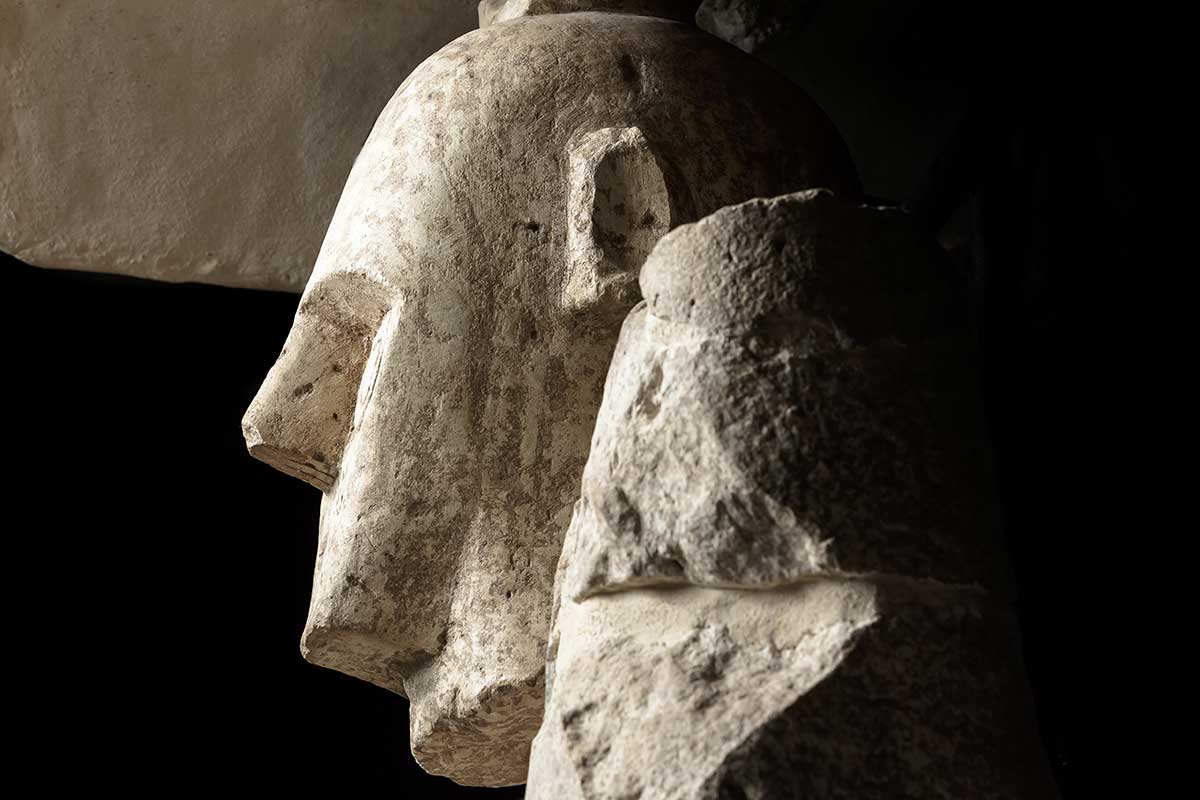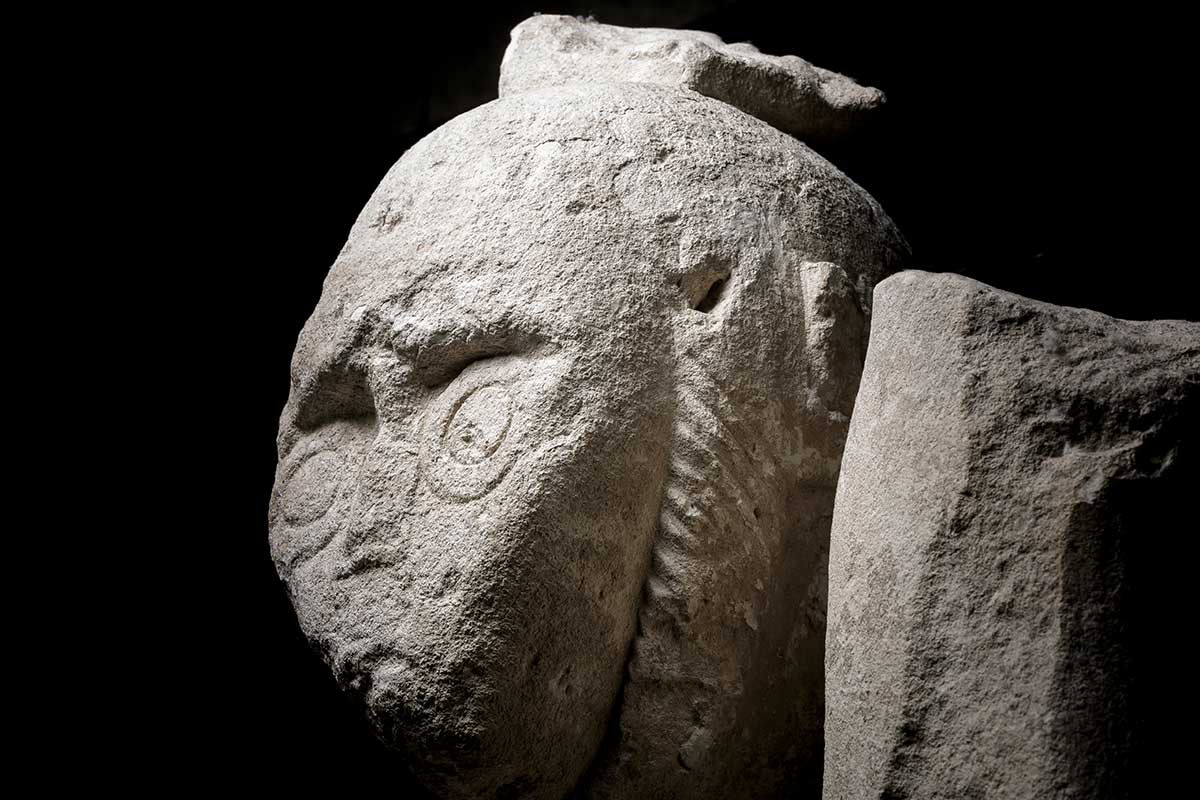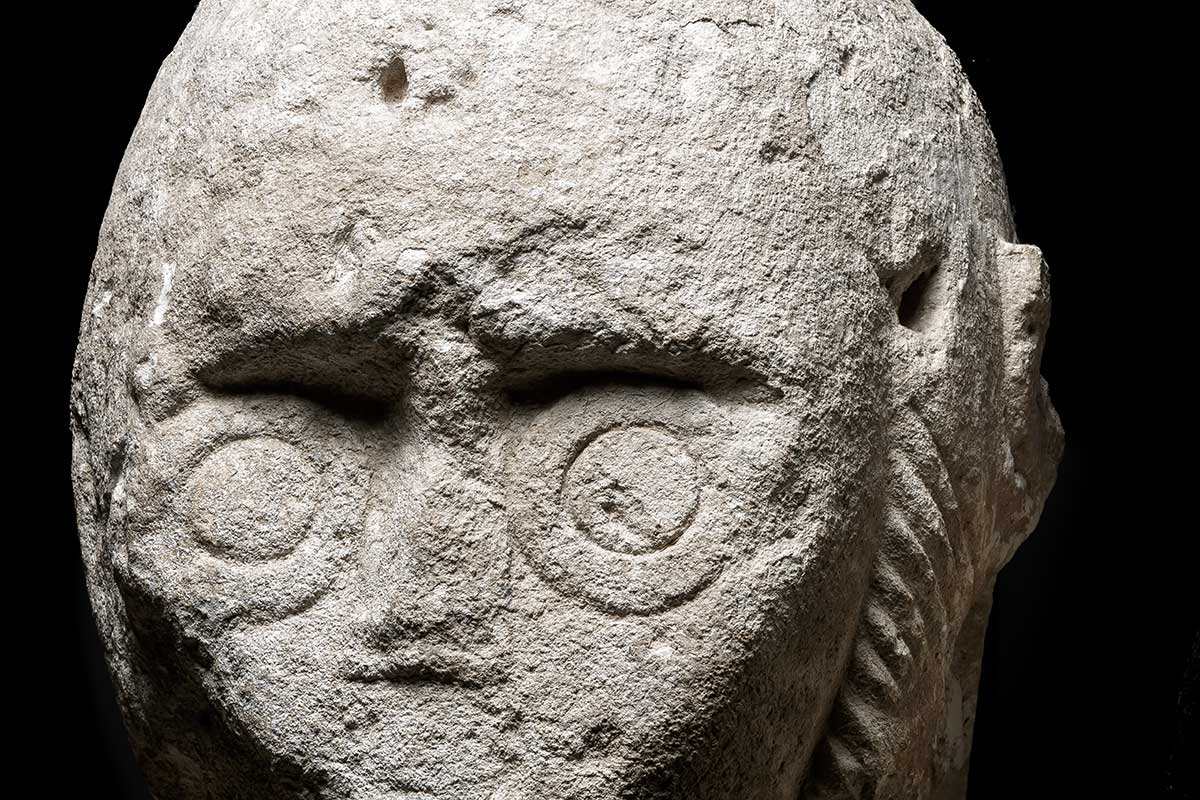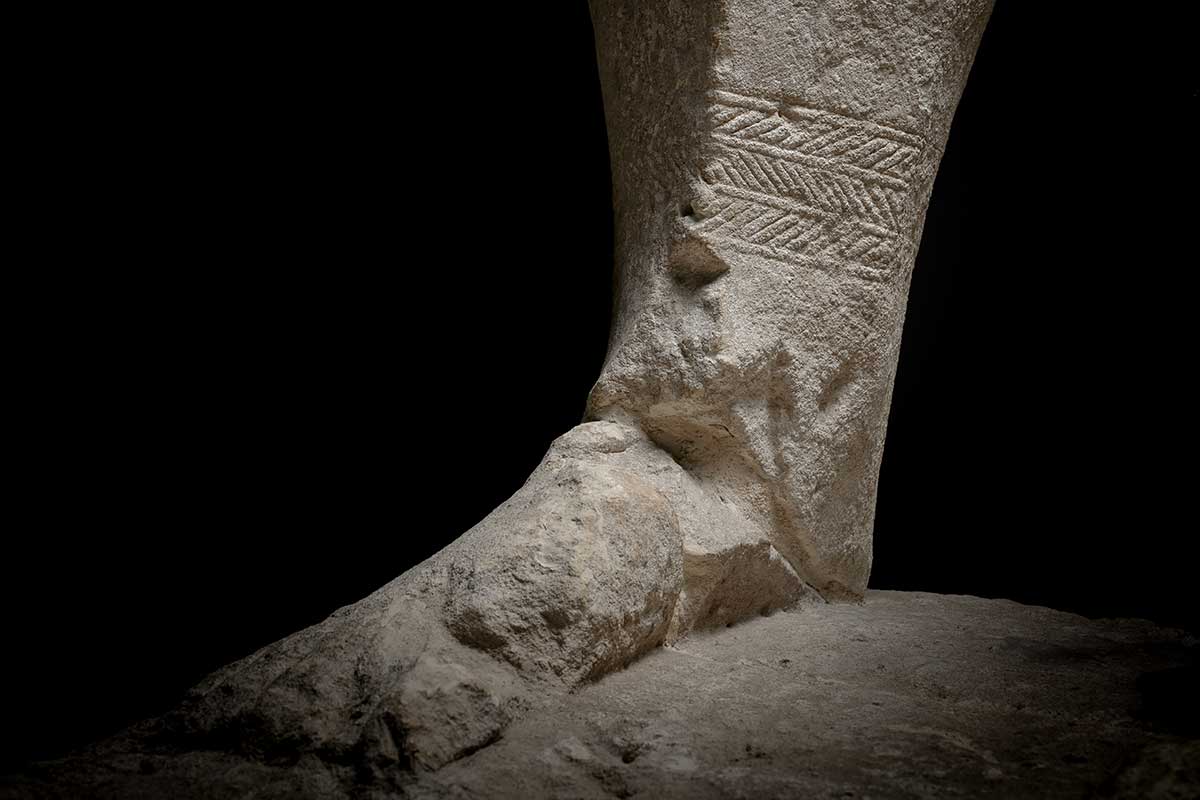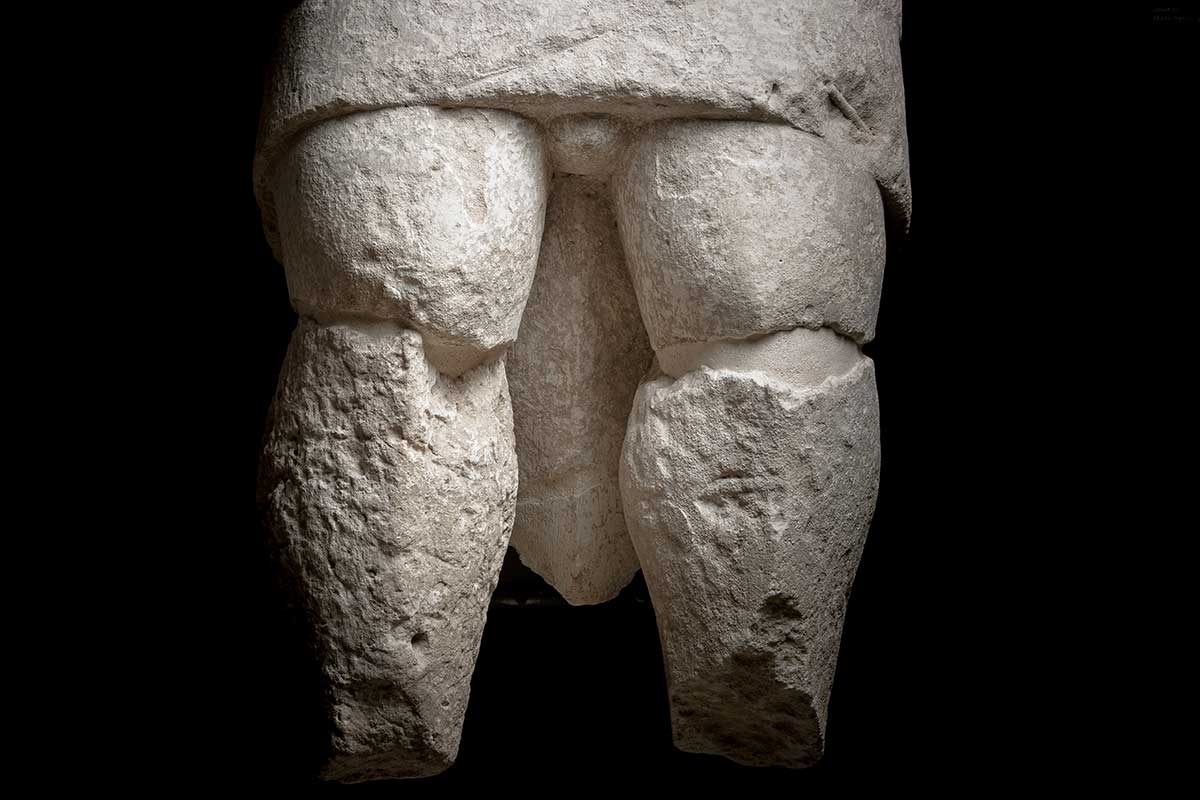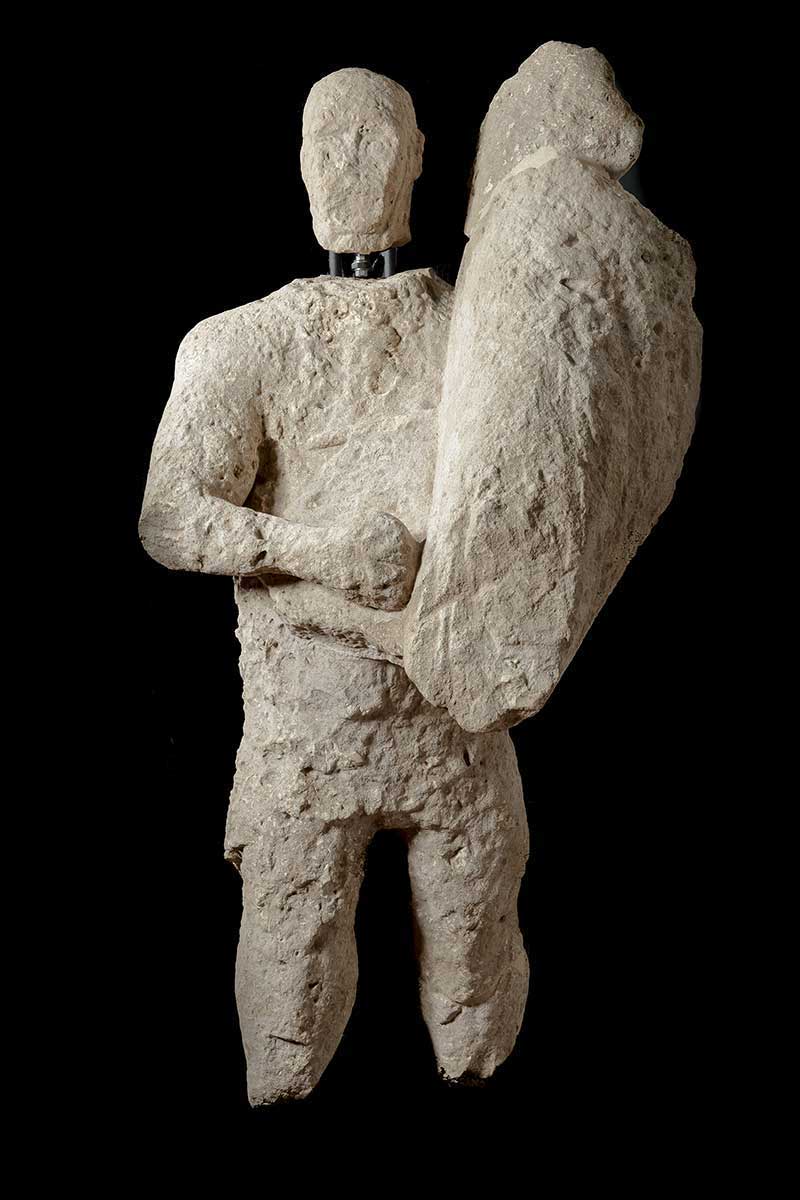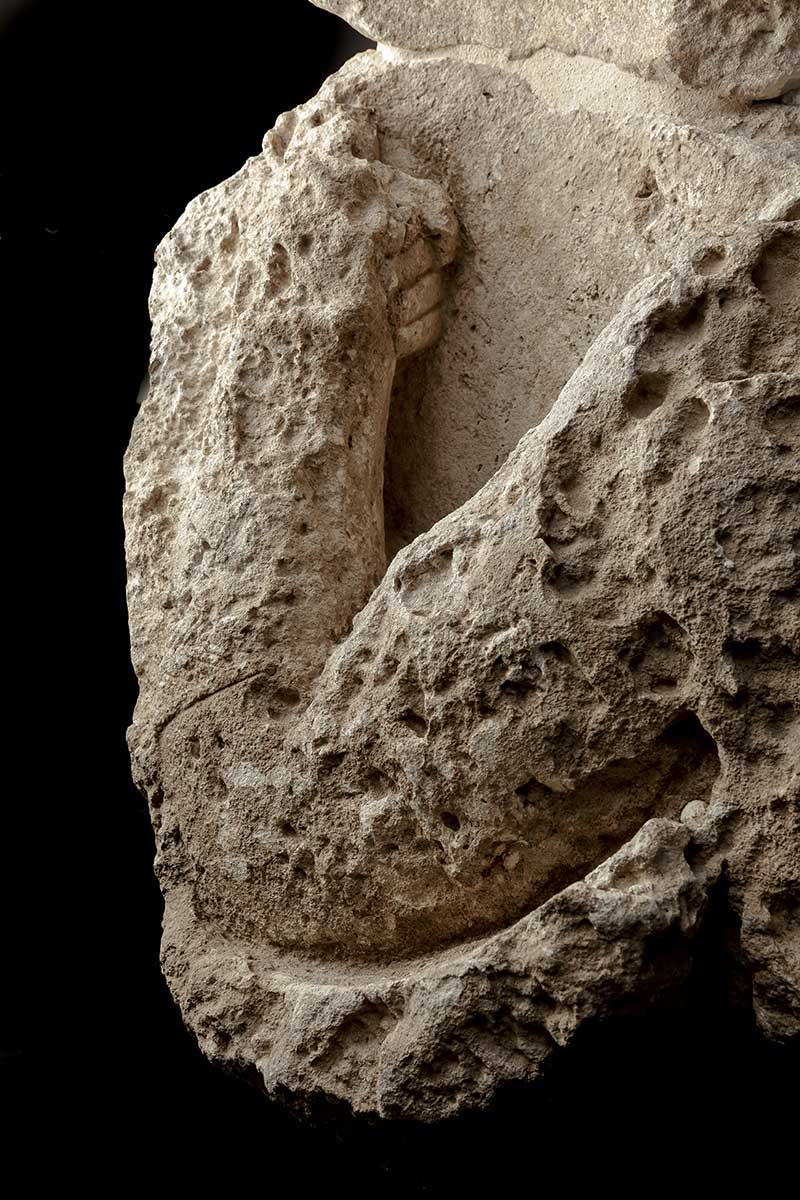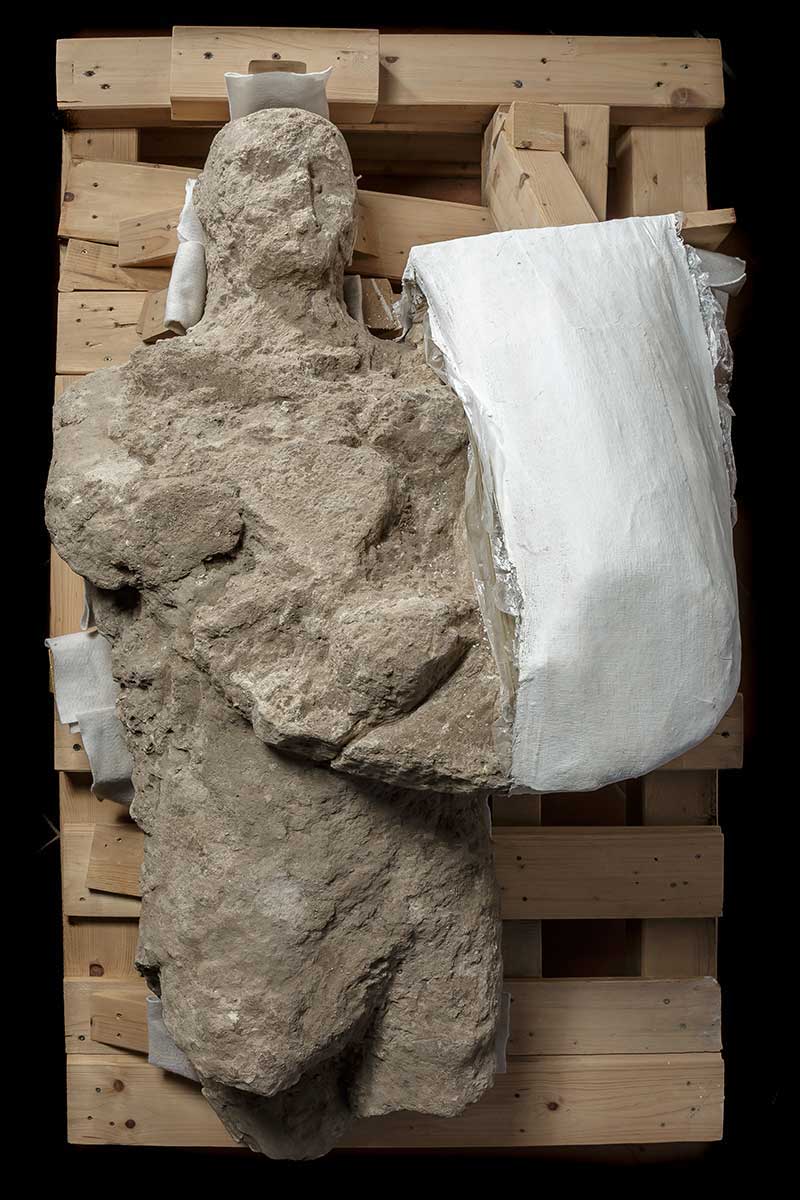Boxers
The boxers covering their heads with their shields make up the largest number of reconstructed statues, although in varying states of conservation.
In this case too, the bronze figurines have been of help in reassembling the statues, although interpretation of this design is not simple and at times uncertain.
Based on the most complete statues, we can easily reconstruct the prototype of the boxer.


The boxer is shown as a bare-chested man with a powerful body. With his left arm he holds over the head a rectangular shield with blunt angles. The right arm is stretched out and bent at right angles and is protected by a sort of glove ending with a projecting point, which was probably the arm of ritual combat. This detail is not visible on the recomposed statues, but only on some fragments which could not be matched with a figure.
He wears only a loincloth with a point to the rear, held up by a band with overlapping flaps at the front, while on the back it becomes larger with a W-shaped design. The details of this garb are shown with great care. The statue rests firmly on bare feet set on a rectangular base. The calves are well marked, as is the shinbone, depicted in a clear and angular manner; the thighs are strong and short relative to the trunk. These statues convey the idea of robust, stocky men.
In two statues the face is perfectly preserved. This makes it possible for us to appreciate its flat triangular form with chin cutting horizontally, with the “T” shape formed by nose and brow and the large round eyes with double circle. The mouth is marked by a narrow engraved line; the ears are semi-circular in shape and hollowed in the centre. The face is surrounded by narrow plaits of hair reaching down to the chest.
This type of figure is known conventionally as ‘boxer’ although its actual interpretation is still uncertain.
Some scholars consider them lightly-armed warriors, equipped for close combat: striking with the sheathed arm and protecting themselves with their shields.
Others see them as athletes competing in sacred, bloody games in honour either of the divinity or of the dead: the boxers would thus be linked to sacred rituals.
In the excavation campaign carried out in 2014 archaeologists found two statues showing a different “boxer” subject: the right arm is not held high with the fist resting on the shield, but is held horizontally across the chest; the shield is not semi-cylindrical and with rounded edges and held above the head, but it is held by the left arm vertically along the body and has a great fold which in part protects the body. Lastly, the feet have sandals and are not bare.
This discovery is exceptional as a sign of a new iconography among the statues, which is also very rare among the bronze figurines. Only one Nuragic bronze statuette with similar iconography is known.
This is the bronze figurine from the tomb of Cavalupo at Vulci, in the Lazio region, dating from the 9th century BC, which in the past had been interpreted as representing a priest.
